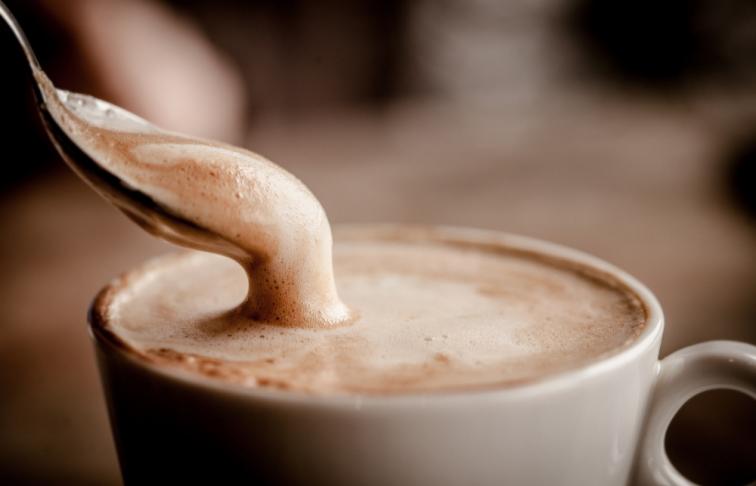Manage your account and see your money through our mobile banking app or on your computer through our website.


We have the Mayans to thank for starting the long history of this drink, back in 1500 BCE. They were an indigenous people of Mexico and Central America who worshipped xocōlātl, which is pronounced ‘shoc-a- latul’, which meant ‘bitter water’. This gives you an indication of how different their recipe was from ours: they made it with crushed cacao beans, cornmeal and chilli pepper. Although they did not use sugar (it was unknown in central America at this time) they did like a foamy top, just like us. They produced this by pouring the drink from height between cups.
Fast forward almost 3,000 years to 1400CE and our humble xocōlātl has become an essential part of Aztec culture. The emperor of the Aztecs, Montezuma II, stockpiled cacao from those he conquered. Legend has it that he drank 50 golden goblets of xocōlātl a day, but he was far meaner with his subjects. He insisted the chocolate drink was only for himself, other royals and the nobility. However, those willing to fight could earn the honour too; every soldier on a campaign received ground cacao pressed into wafers, ready to mix into water to make hot chocolate.
Unfortunately, the foe these soldiers were up against in the early 1500s were the Spanish conquistadors. The fact that conquistador means ‘conquerors’ in Spanish tells you that things did not go well for the Aztecs. Chocolate caught the imagination of the Spaniards, and it was a prized part of a conquering haul which set sail for Spain.
In the 16th century, famous conquistador Hernán Cortés de Monroy y Pizarro Altamirano (most often just referred to as Cortez) presented cocoa beans to the Spanish court of King Charles V. It was an instant hit with royalty, and it ignited what some call a ‘chocolate revolution’ in Europe, possibly because they made a significant change to the recipe: they introduced sugar. They replaced the chilli pepper, which was hard to get in Europe, with black pepper and mixed it with spices for flavour, such as cinnamon, anise, and sesame. One surviving recipe shows hot chocolate "infused with fresh jasmine flowers, amber, musk, vanilla and ambergris."
In the 1700s, chocolate had reached our shores. Still mainly the drink of the rich and well to do thanks to its expense, chocolate houses centred around St James’s Square in London and were frequented by nobles and aristocrats. At one point in the 1700s, London had 700 chocolate houses, which will have been very popular meeting places, just like our coffee shops today. The English believed the drink had health properties and would drink it in the morning as a pick-me-up for the day ahead.
The popularity of hot chocolate continued to grow for centuries – even being used medicinally to treat ailments such as liver and stomach diseases until the 19th century. In 1828, Coenraad Johannes van Houten developed the first cocoa powder producing machine in the Netherlands. This meant that the greasy cocoa butter could be separated from cacao seeds, leaving chocolate powder behind that was easier to stir into milk and water. This also led to a new discovery in 1847: using cocoa powder and cocoa butter to make chocolate bars. For the first time the word ‘chocolate’ was used to refer to solid chocolate, not the hot chocolate drink.
Today, hot chocolate remains a popular choice all over the world, although there are wide variations – for example, in some regions of Nigeria, the drink is topped with cheese.
If reading this article has made you want a drink of hot chocolate, you’ll be glad to know that both cocoa and hot chocolate powder are derived from plant ingredients. The most popular drinking chocolate in the UK is Cadbury's Drinking Chocolate and it is estimated that last year, 4.4 million of us purchased it.